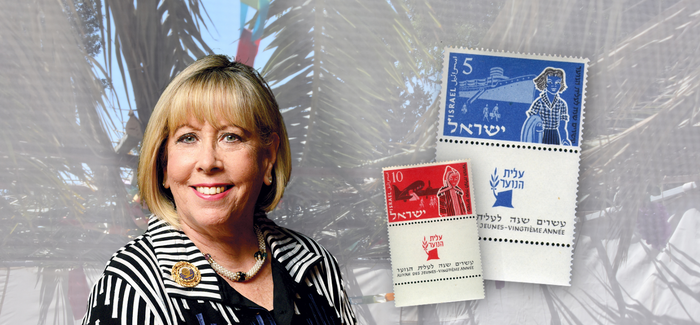Hadassah
President's Column
Good Harvest
It was an opportunity wrapped in a crisis. In February 1932, Recha Freier, a poet, writer of children’s stories and rabbi’s wife, met in her Berlin home with six Jewish teenage boys, members of a Zionist youth group, who had lost their jobs due to rising antisemitism. Adolf Hitler was still a year from gaining power, but Freier was not hopeful for the future. After contact with the local Jewish Labor Exchange proved fruitless, she conceived the idea of sending the boys to Palestine.
Among the people she contacted about her plan was Henrietta Szold, then head of social services for the Yishuv. Familiar with depression-era budgets, Szold told her that a plan to send German Jewish youth to Palestine was unfeasible. Freier eventually raised enough money on her own to send 12 boys, who reached Jaffa in December.
In January 1933, Szold, approaching her 73rd birthday, was planning to retire. At the end of the month, Freier and a group of young Zionist leaders in Berlin formally and quietly launched Youth Aliyah. On the same day as the launch, Hitler was appointed German chancellor. Within two months he was a dictator. And the world was transformed.
By October, Szold agreed to take on the leadership of Youth Aliyah in Palestine, and she visited Berlin to make arrangements for the first group of 63 Jewish girls and boys. In February 1934, she met the first ship with Youth Aliyah refugees to disembark in Haifa—and she met every ship thereafter. By the end of World War II, Youth Aliyah had rescued 7,000 Jewish youngsters from Europe—a number that likely would have been exponentially higher if not for British immigration restrictions.
Though Youth Aliyah was initially funded by a variety of Zionist entities, Hadassah eventually became its sole sponsor. Though the youth were initially placed on kibbutzim, eventually Youth Aliyah established residential villages where children were housed and schooled. Meanwhile, Szold lived to 84 and never retired.
Refugee children who survived World War II streamed into Palestine after the Allied victory, and the numbers increased after Israel declared independence. The need for Youth Aliyah persisted through the high immigration years of early statehood, and each wave brought children who came without parents as well as children from uprooted families who could not thrive in the new educational setting. Ultimately, the project began to help Israeli-born children-at-risk as well. An initiative launched out of a very specific emergency in 1932 eventually met an evolving but permanent need.
Permanent and still growing: Meir Shfeyah, one of our Youth Aliyah villages, has just welcomed a record 678 students—half living in the village, half commuting from their homes—for the new school year. Of the 325 residential students, one-third are in the Na’ale program, those who came alone to Israel. Many are from Ukraine; still more are from Russia and other countries of the former Soviet Union, from Venezuela, Chile and France.
Youth Aliyah is not alone in welcoming newcomers. “Sixty thousand new olim arrived between last Rosh Hashanah and this one, choosing Israel as their new home… integrating into the workforce, with thousands of children filling seats in schools,” Pnina Tamamo-Shata, Minister of Immigration and Absorption, wrote in the Times of Israel in late September. She is Israel’s first Ethiopian-born cabinet member.
“I’ll never forget the day before Holocaust Remembrance Day,” Tamamo-Shata added, “when a plane landed with 20 Holocaust survivors aboard, touching down in Israel after their houses were bombarded by the Russians. Once again, they had been forced to flee from the horrors of war. But this time, they said, was different: In World War II, there was nowhere to run. Today, we have the State of Israel.”
As we observe Sukkot—alternately called “the festival of ingathering,” “harvest festival” and the season of temporary shelters—let us rejoice over a temporary program that became a lifesaving constant of Israel and of Hadassah’s work.
Chag Sukkot sameach!











 Facebook
Facebook Instagram
Instagram Twitter
Twitter
Terre Foreman says
Read this!